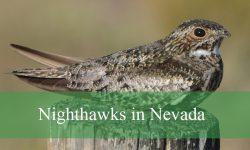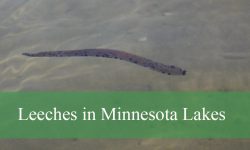Louisiana is well known for its humid summers, vast wetlands, and biodiverse ecosystems. All these conditions make the state a perfect breeding ground for many insects. Yet among these creatures, one species stands out because of its impressive size and surprising behavior. These are the giant mosquitoes often called gallinippers.
Encounters with these insects leave many residents shocked. Their appearance resembles mosquitoes on an exaggerated scale. Their wings make a deeper buzzing sound. Their size is large enough for most people to notice instantly. For new visitors, the first reaction is often disbelief.
Despite their intimidating presence, giant mosquitoes are more fascinating than frightening. They reveal a complex story about Louisiana’s natural landscapes, seasonal patterns, and ecological interactions. The more deeply you explore their biology, the more their surprising secrets unfold.
Understanding Louisiana’s Giant Mosquitoes

What Gallinippers Really Are
The term giant mosquito typically refers to Psorophora ciliata. This species is significantly larger than the common house mosquito. Adults can reach sizes comparable to a small horsefly. Their legs are long and striped. Their bodies are robust. Their flight is strong and noticeable.
Residents often assume these giants carry dangerous diseases. Fortunately, gallinippers are not major disease vectors. Their life cycle and feeding behavior differ from smaller mosquito species known for spreading viral infections.
The most striking aspect of the gallinipper is not its bite but its ecological role and life history.
Distinct Appearance
Giant mosquitoes have golden or orange hair-like scales on their thorax. Their hind legs display a pronounced featherlike fringe that helps distinguish them from other species. Their wings are broad which contributes to the heavy buzzing sound people often describe when they fly past.
The sheer visibility of these insects makes them memorable. Unlike typical mosquitoes that remain unnoticed until after they bite, gallinippers are obvious long before they make contact.
Natural Habitat in Louisiana
Louisiana’s warm climate provides optimal conditions for the gallinipper. Its wetlands, marshes, swamps, bayous, and periodically flooded fields make excellent breeding habitats. Heavy rainfall is particularly important because this species relies on temporary pools of water.
The state’s subtropical climate supports multiple generations each year. Outbreaks can occur after tropical storms or intense summer rains which create widespread floodwater breeding sites.
Why Giant Mosquitoes Thrive in Louisiana
Floodwater Breeding Strategy
Unlike many mosquitoes that require permanent water sources, gallinippers specialize in breeding in temporary puddles created by rain. Their eggs can remain dormant in dry soil for extended periods. When heavy rainfall floods the area, these eggs hatch almost simultaneously.
This synchronized hatching creates sudden population explosions that surprise residents. Large numbers of adult gallinippers emerge at once making them hard to ignore.
Rapid Development Cycle
The larvae of gallinippers grow quickly. They complete development in a shorter time frame than common mosquito species. This is essential because temporary pools evaporate quickly in Louisiana’s summer heat.
The speed of development means that after a stormy week, adults can already be active in large numbers. Their rapid growth also helps them outcompete other species under certain conditions.
Louisiana’s Climate Patterns
Louisiana experiences recurring rainfall events, tropical systems, and seasonal flooding. These patterns support the ongoing survival of gallinippers during spring, summer, and fall. The combination of humidity, standing water, and warm temperatures matches their ideal living conditions.
This climate variability is one of the key reasons they are so successful. In years with heavier rainfall, residents often report significantly more giant mosquitoes.
Surprising Biology and Behavior of Gallinippers
Not Actually Mosquito Predators but Their Larvae Are
Adult gallinippers behave similarly to other mosquitoes in terms of feeding. Females bite to obtain protein for egg production. Males primarily feed on nectar. However, their larvae are among the most aggressive predators in freshwater microhabitats.
Gallinipper larvae can attack and consume the larvae of other mosquito species. They also prey on small aquatic organisms. This predatory behavior helps limit populations of smaller disease carrying mosquitoes.
The larval stage is therefore an important part of their ecological story.
Large and Painful Bites
Although gallinippers are not considered major vectors of human disease, their bites are notorious. They are described as painful because of the insect’s size and the strength of its mouthparts. Many people feel the bite instantly rather than discovering it afterward.
The discomfort does not necessarily indicate medical risk but it does create a strong impression. Their bites often leave noticeable welts due to the mechanical pressure of the bite itself.
Strong Fliers
Giant mosquitoes are powerful fliers. They can cover substantial distances in search of hosts. Their size gives them the strength to travel through wind and open spaces more effectively than small mosquitoes.
This ability helps them expand their range after emerging from floodwater breeding sites. It also increases their visibility to humans. People often notice them from several feet away because of the deeper sound of their wings.
The Life Cycle of Giant Mosquitoes
Egg Stage
Gallinipper females lay their eggs individually on soil that is likely to flood in the future. The eggs are resistant to drying. They remain dormant until rainfall saturates the soil and triggers hatching.
This adaptation allows the species to anticipate environmental conditions. When heavy rains arrive the eggs hatch almost immediately.
Larval Stage
The larvae are vigorous predators. Their strong mandibles allow them to feed on a range of aquatic prey. This reduces competition in the water and speeds up their growth.
Larvae are usually found in freshly flooded areas such as roadside ditches, open fields, forest floors, rice fields, and low lying grassy areas.
Pupal and Adult Stages
After the larval stage, they develop into pupae which rest near the water surface. Within a short time they emerge as adults. Adult females begin biting soon after emergence and search for protein sources to fuel egg development.
Adult gallinippers live longer than some other floodwater species but their populations fluctuate heavily depending on rainfall.
Ecological Role of Gallinippers in Louisiana
Regulation of Other Mosquito Species
Because gallinipper larvae feed on the larvae of other mosquitoes they help regulate populations of species that are more harmful to humans. This makes them an example of how complex ecological interactions can influence mosquito related public health issues.
Although they are not pleasant to encounter the presence of gallinippers may indirectly reduce the abundance of disease carrying species in some areas.
Food Source for Other Wildlife
Adult and larval gallinippers serve as prey for amphibians, fish, birds, bats, and other predators. Louisiana’s rich ecosystems depend on these dynamic interactions. Without mosquitoes and similar insects, many species would lose essential food sources.
Indicators of Seasonal Flooding
Large outbreaks of gallinippers are often linked to specific types of rainfall events. This makes them ecological indicators of localized flooding and soil moisture. Scientists sometimes observe these insects to understand short term changes in wetland conditions.
Human Encounters and Reactions
Why People Notice Them
Giant mosquitoes stand out. Their large size makes them impossible to ignore. People often spot them on porches, near outdoor lights, or around bodies of water after heavy rains.
The visibility of gallinippers contributes to their reputation. Their appearance alone can create alarm even though they are not highly dangerous.
Painful Bites and Immediate Reactions
People report that gallinipper bites feel like a small pinch or sharp pressure. The sensation begins instantly and may linger longer than a typical mosquito bite. The swelling tends to be larger due to the insect’s size.
Although the bites are uncomfortable they do not usually require medical attention unless the person develops an allergic reaction.
Confusion With Other Large Insects
Some residents mistake gallinippers for crane flies or wasp like insects. Crane flies, however, do not bite humans. Their size can appear similar in flight which contributes to the confusion.
Proper identification helps reduce fear and misunderstanding.
Are Giant Mosquitoes Dangerous
Disease Transmission
Giant mosquitoes are not known to be major vectors for human diseases. Most disease carrying species come from other genera such as Aedes or Culex. Gallinippers may bite but they rarely contribute to outbreaks of mosquito borne illness.
Allergic Reactions
Like any biting insect gallinippers can trigger allergic responses in sensitive individuals. Symptoms may include redness, swelling, and itching. Severe reactions are rare.
Misconceptions
One common misconception is that giant mosquitoes can pierce through clothing or cause severe wounds. Their bites are painful but not dangerous in most cases. Awareness helps dispel myths that exaggerate their threat.
Why Giant Mosquitoes Appear After Hurricanes and Storms
The Connection to Floodwater
Hurricanes and tropical storms bring heavy rainfall over short periods. These conditions create perfect breeding pools for gallinippers. Within weeks of a major storm, large populations may emerge, catching communities off guard.
Temporary pools created by storm surge and localized flooding act as ideal hatcheries.
Dormant Eggs Waiting for Rain
Gallinipper eggs may remain dormant for months. When hurricanes saturate the soil the eggs hatch in huge numbers. This makes the species particularly responsive to extreme weather.
Regional Patterns in Louisiana
Outbreaks often occur in southern and eastern Louisiana where rainfall accumulates easily. Parishes with extensive wetlands such as St. Bernard, Plaquemines, Jefferson, and St. Tammany frequently report high numbers during wet years.
How Residents Can Reduce Encounters
Managing Standing Water
Removing standing water helps reduce mosquito populations. This includes checking containers, gutters, flower pots, and clogged drains. Temporary ground depressions can also be filled or drained.
Although gallinippers prefer natural floodwater, reducing artificial water sources lowers overall mosquito pressure.
Using Protective Clothing
Wearing long sleeves and pants during peak mosquito activity can reduce bites. Gallinippers are large enough that clothing provides significant protection.
Screens and Barriers
Window screens, porch netting, and outdoor fans help keep mosquitoes away from living spaces. The airflow from fans disrupts their flight.
Community Level Mosquito Control
Local mosquito abatement programs monitor populations and treat breeding sites. Because gallinippers prefer large natural floodwater areas, control is more challenging. Still, coordinated efforts help manage outbreaks.
How Climate Change Could Influence Future Populations
Increased Rainfall Events
As climate patterns shift Louisiana may experience more intense rainfall and tropical storms. This could increase the number of floodwater breeding events and potentially expand the range of gallinippers.
Longer Warm Seasons
Extended warmth allows more mosquito generations per year. Gallinippers may reproduce earlier or maintain activity longer into the fall.
Changing Ecosystems
Wetland changes may alter where gallinippers breed. The species may occupy areas that were previously less suitable.
Giant Mosquitoes and Scientific Research
Studying Their Predatory Larvae
Biologists are interested in gallinipper larvae because of their predatory nature. Understanding their feeding behavior helps researchers learn more about mosquito population dynamics.
Potential Benefits
Some scientists explore the idea that predatory mosquito species could help reduce harmful mosquito populations. Although this is complex in practice, research continues.
Observing Population Surges
Researchers track gallinipper outbreaks to study environmental indicators. Their presence offers clues about rainfall patterns and groundwater dynamics.
FAQs About Giant Mosquitoes in Louisiana
Are giant mosquitoes in Louisiana dangerous
They are not major disease vectors but their bites are painful. They pose minimal medical risk.
Why are they so large
Their size is a natural adaptation. It helps them navigate floodwater environments and hunt aggressively as larvae.
When are gallinippers most common
They appear most often after heavy rain, hurricanes, or seasonal flooding.
Do they spread diseases
They are not known to spread common mosquito borne diseases and are considered low risk.
Can they pierce clothing
Normal clothing prevents most bites. They cannot pierce thick fabrics.
Where do they breed
They breed in temporary pools formed by rain or flooding. Eggs hatch when the soil becomes saturated.
How can I avoid them
Avoiding outdoor areas after heavy rains, using repellents, and eliminating standing water helps reduce encounters.
Do they appear every year
Their populations vary. Some years have few while others experience large outbreaks.
Are they beneficial
Their larvae help control other mosquito species by feeding on them.
Can pets be bitten
Yes. Pets may experience discomfort but serious reactions are rare.
Conclusion
Giant mosquitoes in Louisiana are remarkable insects with an equally remarkable story. Their sudden appearances after storms, their massive size, and their powerful bite draw attention, yet their ecological role is often overlooked. These insects reveal how closely Louisiana’s wildlife is tied to rainfall patterns, seasonal flooding, and the rich wetlands that define the region.
Understanding gallinippers helps residents make sense of unpredictable mosquito seasons and respond more effectively to outbreaks. Although their presence can be alarming, they remain an integral part of the state’s natural environment. Their biology, behavior, and survival strategies illustrate a surprising depth of complexity. The more closely you study them, the more secrets they reveal about Louisiana’s dynamic and ever changing ecosystems.






